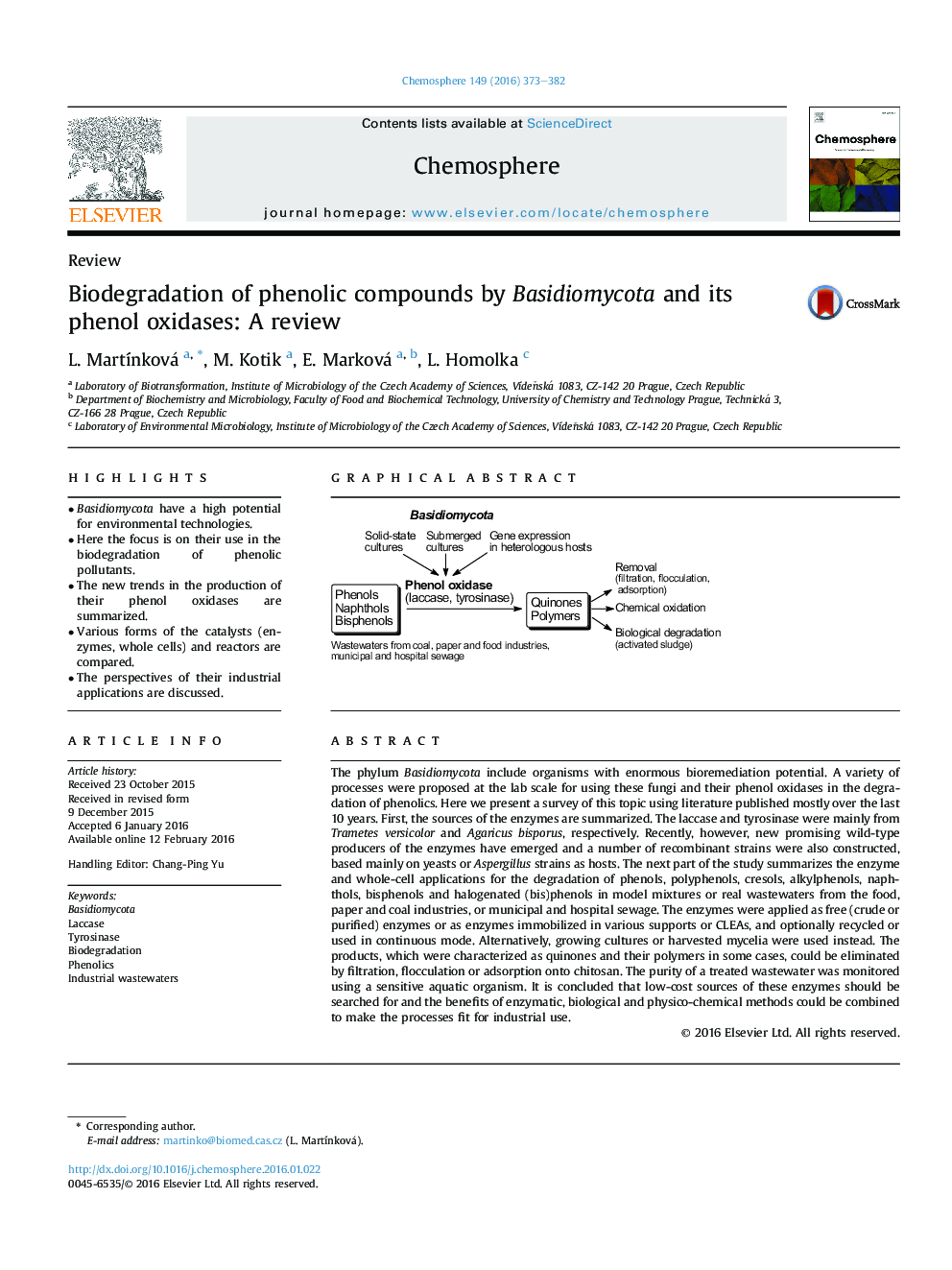| کد مقاله | کد نشریه | سال انتشار | مقاله انگلیسی | نسخه تمام متن |
|---|---|---|---|---|
| 4407921 | 1618822 | 2016 | 10 صفحه PDF | دانلود رایگان |

• Basidiomycota have a high potential for environmental technologies.
• Here the focus is on their use in the biodegradation of phenolic pollutants.
• The new trends in the production of their phenol oxidases are summarized.
• Various forms of the catalysts (enzymes, whole cells) and reactors are compared.
• The perspectives of their industrial applications are discussed.
The phylum Basidiomycota include organisms with enormous bioremediation potential. A variety of processes were proposed at the lab scale for using these fungi and their phenol oxidases in the degradation of phenolics. Here we present a survey of this topic using literature published mostly over the last 10 years. First, the sources of the enzymes are summarized. The laccase and tyrosinase were mainly from Trametes versicolor and Agaricus bisporus, respectively. Recently, however, new promising wild-type producers of the enzymes have emerged and a number of recombinant strains were also constructed, based mainly on yeasts or Aspergillus strains as hosts. The next part of the study summarizes the enzyme and whole-cell applications for the degradation of phenols, polyphenols, cresols, alkylphenols, naphthols, bisphenols and halogenated (bis)phenols in model mixtures or real wastewaters from the food, paper and coal industries, or municipal and hospital sewage. The enzymes were applied as free (crude or purified) enzymes or as enzymes immobilized in various supports or CLEAs, and optionally recycled or used in continuous mode. Alternatively, growing cultures or harvested mycelia were used instead. The products, which were characterized as quinones and their polymers in some cases, could be eliminated by filtration, flocculation or adsorption onto chitosan. The purity of a treated wastewater was monitored using a sensitive aquatic organism. It is concluded that low-cost sources of these enzymes should be searched for and the benefits of enzymatic, biological and physico-chemical methods could be combined to make the processes fit for industrial use.
Figure optionsDownload as PowerPoint slide
Journal: Chemosphere - Volume 149, April 2016, Pages 373–382